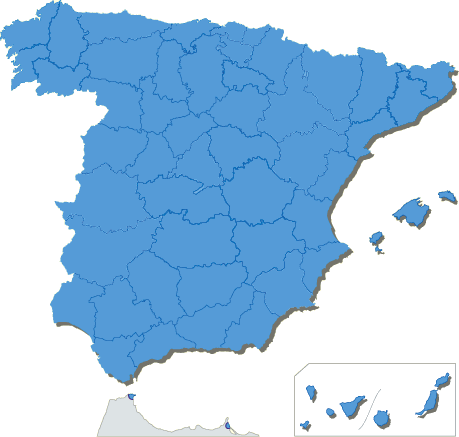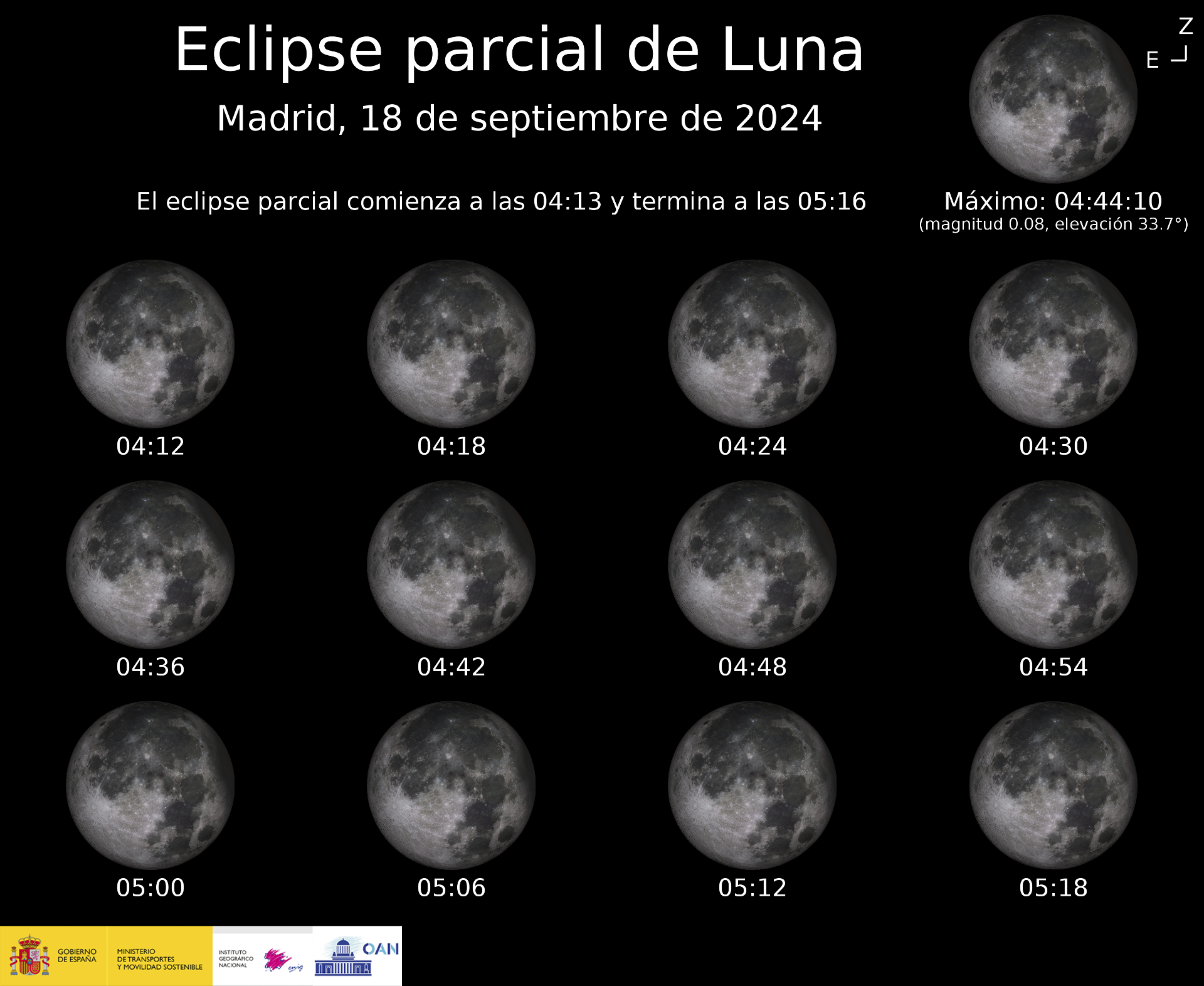Eclipse de luna del 18 de septiembre de 2024
El eclipse en las capitales de provincia
Seleccione en el mapa inferior la provincia para obtener la secuencia del eclipse tal como se verá desde su capital, con los tiempos expresados en hora oficial.
La imagen cargada por defecto corresponde a la secuencia del eclipse correspondiente a Madrid, y puede ampliarse pulsando sobre ella.
Detalles
El 18 de septiembre se producirá un eclipse parcial de muy baja magnitud (0,08) que será visible en alguna de sus fases en: Asia, Europa, África y América. La zona en que será visible la fase de parcialidad viene delimitada por la parte interna de las curvas etiquetadas con iS y fS.
El eclipse será visible como parcial en toda España.
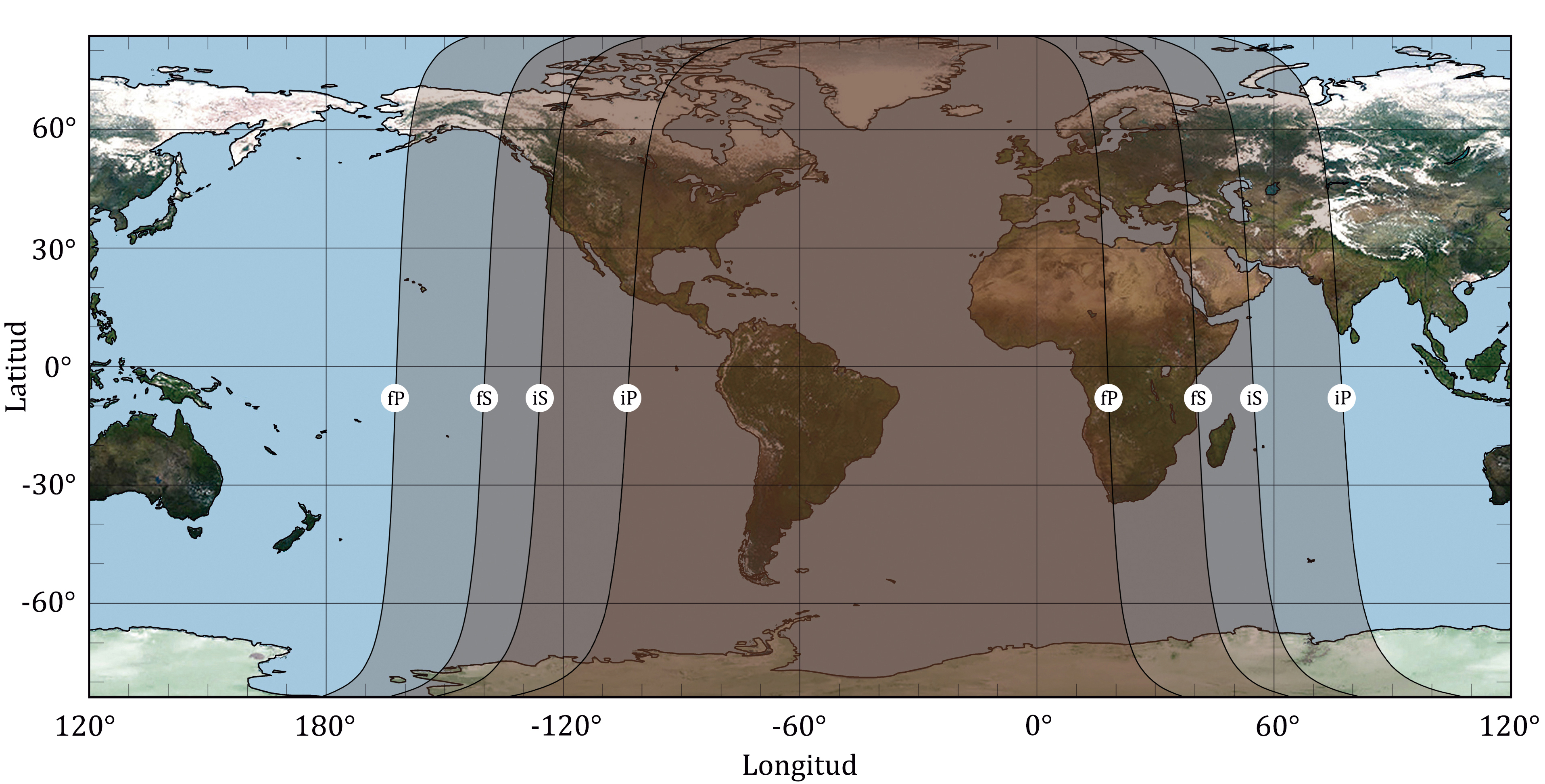
Pulse aquí para ver la evolución del eclipse desde cada capital de provincia española.
Eclipses de Luna
Denominamos eclipse de Luna al fenómeno por el cual la Tierra impide que la luz del Sol llegue hasta la Luna, generando un cono de sombra que oscurece a la Luna. La Luna totalmente eclipsada adquiere un color rojizo característico debido a la dispersión de la luz refractada por la atmósfera de la Tierra.
A diferencia de los eclipses solares, que pueden ser vistos solo desde una parte relativamente pequeña de la Tierra y duran unos pocos minutos, un eclipse lunar puede ser visto desde cualquier parte de la Tierra en la que sea de noche y se prolongan durante varias horas.
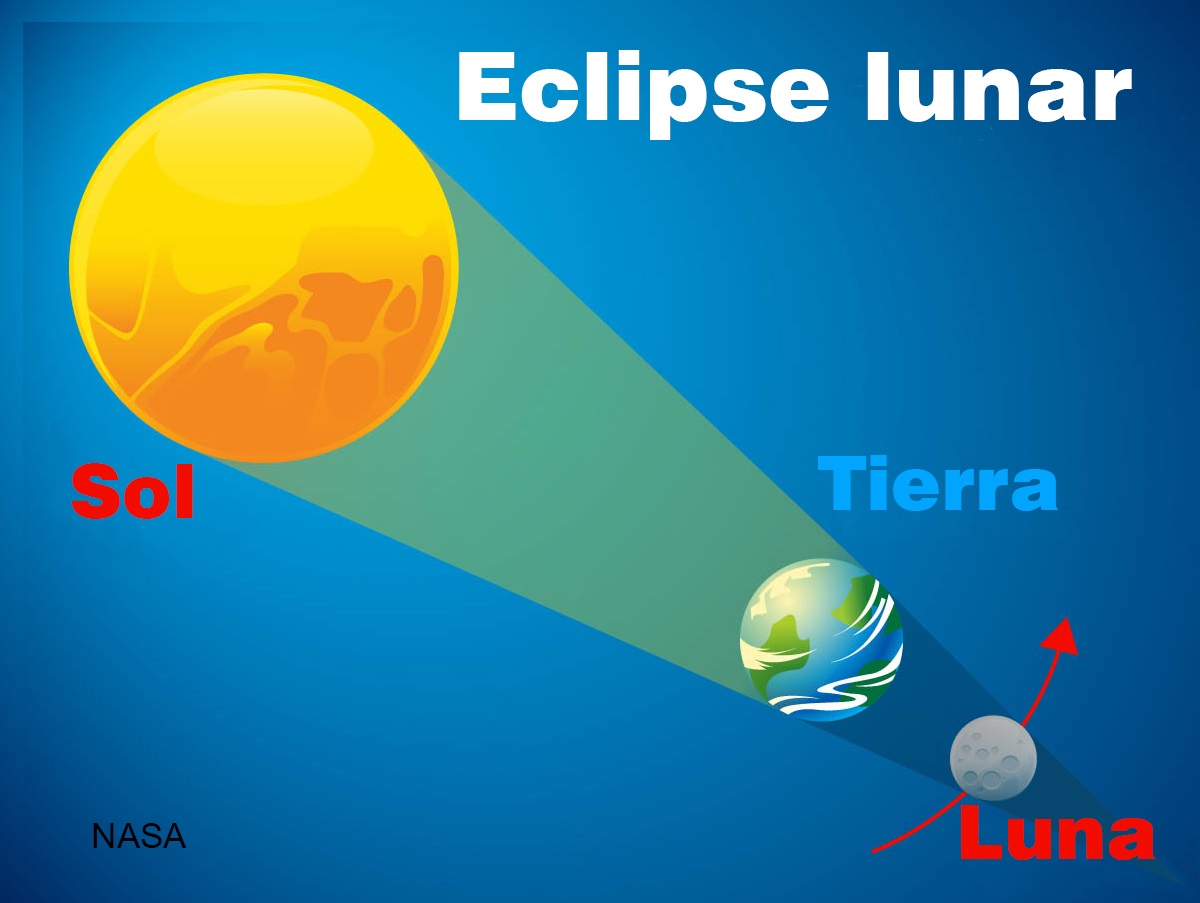
Tipos de eclipses
Debido al tamaño angular del Sol, la sombra que proyecta la Tierra consta de dos zonas: la umbra y la penumbra. En la umbra no existe radiación solar directa, mientras que en la penumbra la radiación solar es bloqueada solo parcialmente. Por ello los eclipses se clasifican en totales, parciales y penumbrales. Un observador dirá que ha visto un eclipse total cuando la Luna se haya situado completamente en la zona umbral. Cuando solo una parte de la Luna se situe en la umbra, el eclipse será parcial. Si la Luna se situa en la penumbra, el eclipse será penumbral, y solo se producirá un sutil oscurecimiento en la superficie lunar.
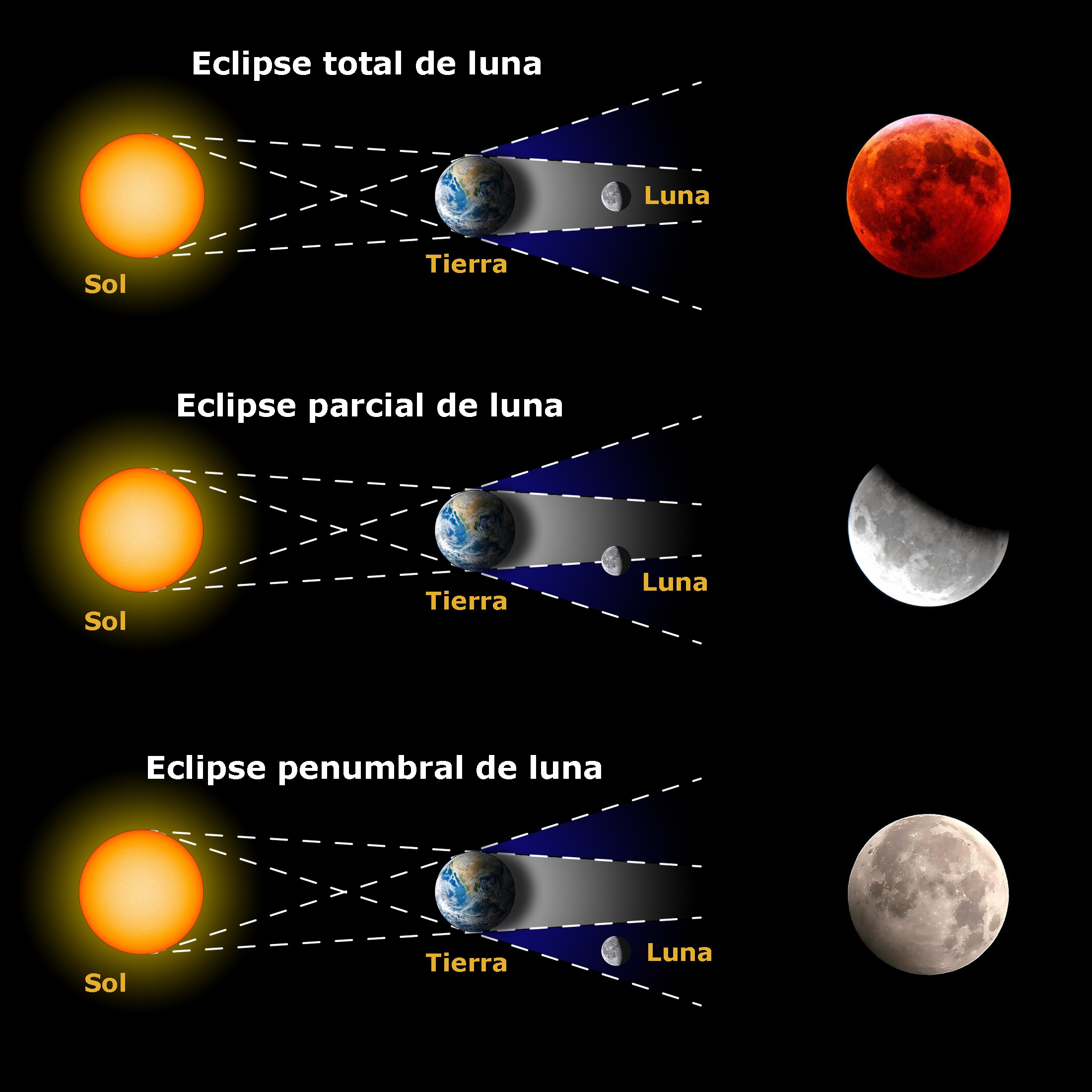
¿Cuándo suceden los eclipses?
El plano por el que orbita la Luna alrededor de la Tierra (en color azul en la figura siguiente) está inclinado 5º respecto al plano por el que orbita la Tierra (y la Luna) alrededor del Sol (en amarillo). Dado que los eclipses requieren del alineamiento casi perfecto de los tres astros, los eclipses se dan muy pocas veces a lo largo del año. La Luna tarda un mes aproximadamente en completar una vuelta alrededor de la Tierra, por lo que si ambos planos coincidieran tendríamos 12 eclipses de Sol y otros 12 de Luna cada año. En la práctica, el número de eclipses que se dan cada año es de entre 4 y 7, incluyendo los de Sol y Luna. En muchos casos los eclipses son parciales (o incluso penumbrales sólo en los de Luna), y visibles desde una fracción de la superficie terrestre. Cuando la Luna se encuentra cerca del Sol en el cielo la fase es de luna nueva, y existe la posibilidad de un eclipse de Sol. Cuando la Luna se encuentra en la dirección opuesta al Sol (visible toda la noche) la fase es de luna llena, y existe la posibilidad de un eclipse de Luna.
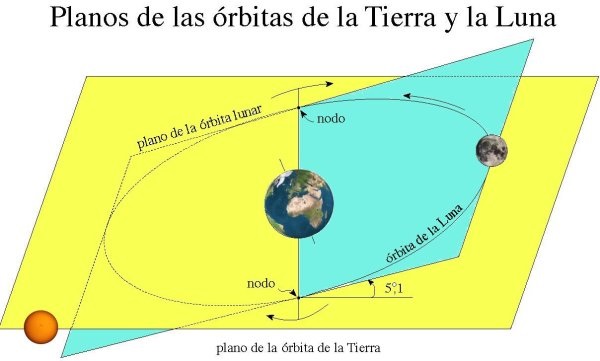
Información básica
Durante la noche del 18 de septiembre de 2024 será posible observar un pequeño eclipse parcial de Luna que será visible en toda España. La observación del eclipse se puede realizar a simple vista y no entraña ningún peligro ni requiere ningún tipo de instrumentación especial.
En la pestaña "Desde las capitales de provincia" podrá consultar la evolución en cada una de ellas.


